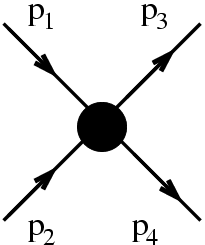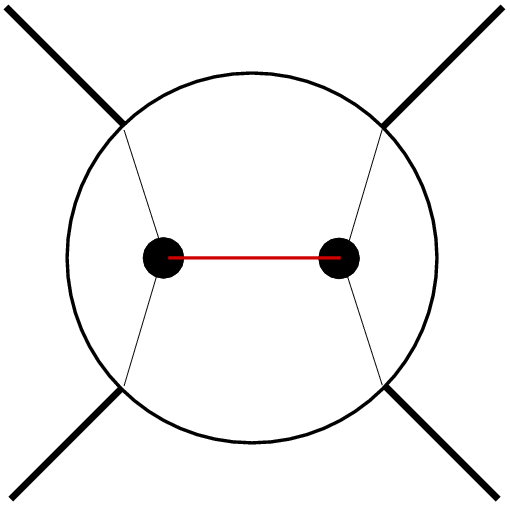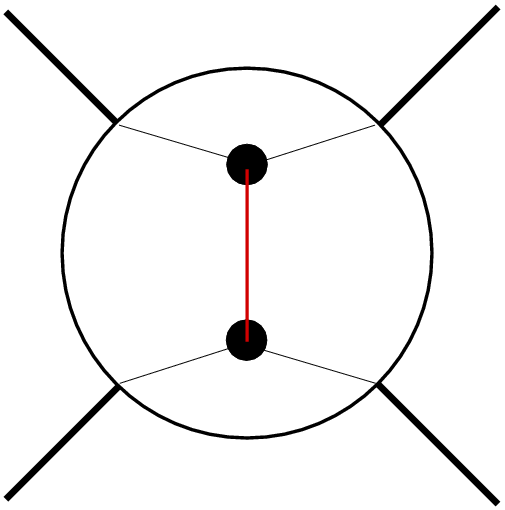It is clear that physical scattering amplitudes should better be independent of the frame they're calculated or measured in. This translates into the fact that they depend on covariant quantities only: Masses (or, better, their squares) and products of four-momenta. Basic scattering or production processes at collider experiments are typically of the form 2→ 2:
 |
 |



 |
 |
| s-channel process: the scattering process is realised through the exchange of a virtual particle with momentum p=p1+p2 |
t-channel process: the scattering process is realised through the exchange of a virtual particle with momentum p=p1-p3 |